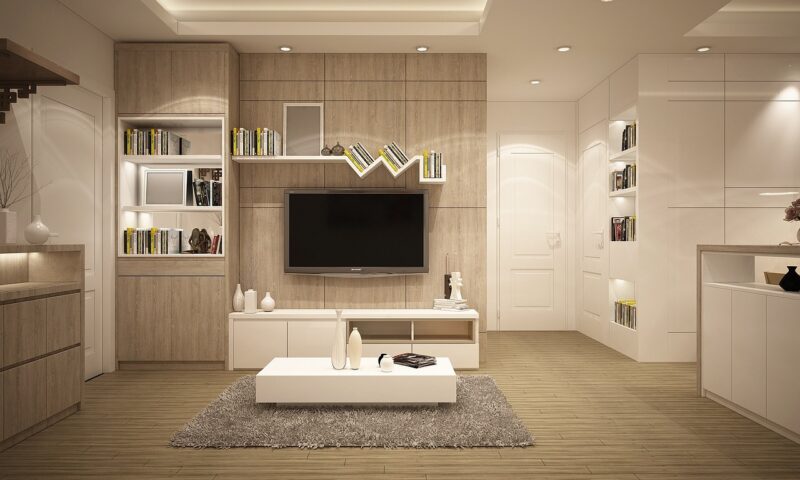The Evolution of Modern Design: From Bauhaus to the Minimalist Movement
November 16, 2024

Modern design has undergone a transformative journey since the early 20th century, with various movements reflecting the cultural, social, and technological shifts of their times. At the forefront of this evolution was the Bauhaus school, which laid the foundation for many principles of modern design that continue to echo through the minimalist movement today. In this article, we will explore the key characteristics of these design movements, their historical significance, and how they set the stage for contemporary aesthetics.
1. The Birth of Modern Design and the Bauhaus
The Bauhaus school was established in Weimar, Germany, in 1919 by architect Walter Gropius. It represented a radical shift in the approach to art and design, merging traditional crafts with modern industrial techniques. The core philosophy of Bauhaus was to create functional and aesthetically pleasing designs that were accessible to all.
**Key Ideals of the Bauhaus Movement:**
- Form Follows Function: This principle emphasized that the design of an object should be dictated by its intended purpose, leading to simple and efficient design solutions.
- Unity of Art and Technology: Bauhaus sought to integrate artistic creativity with technological advancements, encouraging collaboration between artists and industrial designers.
- Accessibility: One of the goals was to make good design affordable and accessible to the masses, moving away from elitist art practices.
The Bauhaus movement produced notable figures such as Paul Klee, Wassily Kandinsky, and Marcel Breuer, all of whom contributed to various aspects of design — from furniture to textiles. The influence of the Bauhaus school reverberated globally, leading to the emergence of modern architecture, industrial design, and graphic design.
2. Post-Bauhaus Influences: Mid-20th Century Design
Following the closure of the Bauhaus in 1933 due to Nazi pressure, its ideas and principles continued to flourish, shaping several post-war design movements. The international style emerged, characterized by an emphasis on minimalism, which eschewed ornate decoration in favor of clean lines and geometric shapes.
**Notable Movements Influenced by Bauhaus:**
- Brutalism: This architectural style emerged as a reaction to the sleekness of modernism, favoring raw concrete and an unapologetic display of structure, emphasizing functionality over form.
- Scandinavian Design: Known for its simplicity, minimalism, and functionality, this design style brought warmth and natural materials into play, balancing the cold characteristics of modernism with a touch of comfort.
- Pop Art: Emerging in the 1950s and 60s, pop art challenged traditional aesthetics and the distinction between high and low art, embracing commercial design and popular culture.
These movements collectively showcased an evolving narrative in the design landscape, highlighting how cultural contexts influenced stylistic choices.
3. The Rise of Minimalism in Design
The minimalist movement, which gained momentum in the late 20th century, is often seen as a natural progression from the Bauhaus ideals. Minimalism emphasizes simplicity, using only essential elements to create a sense of order and tranquility.
**Principles of Minimalist Design:**
- Less is More: This mantra promotes the idea that reducing clutter allows the inherent beauty of materials and forms to shine through.
- Neutral Color Palettes: Minimalist design often incorporates soft, neutral colors to create a calm and cohesive space, reducing distractions and enhancing overall aesthetic appeal.
- Open Spaces: Emphasizing openness and light, minimalist interiors prioritize collaboration between living areas while minimizing barriers and delineations.
Minimalism has permeated various design disciplines, including architecture, interior design, and graphic design. Noteworthy figures, such as architect Tadao Ando and designer Konstantin Grcic, exemplify how minimalism transcends styles while maintaining a fresh approach to design through simplicity.
4. The Continuity and Intersection of Design Movements
While the Bauhaus and minimalist movements each have unique characteristics, they share core philosophies that continue to influence contemporary design. The push toward functionality, simplicity, and accessibility unites them under the umbrella of modern design.
**Points of Intersection:**
- Functionality Over Ornamentation: Both movements advocate for designs that serve a clear purpose without unnecessary embellishments.
- Materiality: An emphasis on honest materials remains central to both movements, with modern designers often favoring sustainability and transparency in their choices.
- Global Influence: The legacy of both movements extends worldwide, impacting cultural identities and creating vernacular expressions of modernism across borders.
As we move further into the 21st century, the convergence of technology and design continues to push boundaries, suggesting that the future of design will be deeply rooted in these foundational movements.
5. Conclusion: The Enduring Legacy of Bauhaus and Minimalism
The evolution of modern design from Bauhaus to the minimalist movement highlights a rich tapestry woven from cultural shifts, technological advancements, and philosophical inquiries. As we embrace contemporary design, understanding these foundational movements allows us to appreciate the value of simplicity, functionality, and accessibility.
The principles established by the Bauhaus have not only shaped our environment but also redefined our approach to design, emphasizing that beautiful and functional objects can indeed coexist. In an age inundated with excess, the minimalist movement serves as a reminder of the power of simplicity, urging us to create spaces that reflect clarity, purpose, and beauty in their most distilled forms.
Furthermore, the exploration of these design movements invites us to consider the ongoing dialogue between past and present, shaping the future of design for generations to come. As we navigate the ever-evolving landscape of modern aesthetics, the legacies of both Bauhaus and minimalism will undoubtedly guide us toward creating more thoughtful and impactful design solutions.






